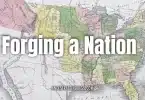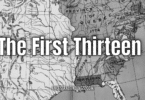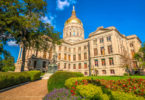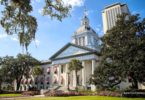The city of Harrisburg is the capital of Pennsylvania. It is also the county seat of Dauphin County and has a population of about 50,000, making it the thirteenth most populous city in the state. It is east of the Susquehanna River and 107 miles west of Philadelphia. It is the primary city of the Harrisburg Metropolitan Area, which has a population of about 578,000 people, which makes it the fourth most populous metropolitan area in the state, and the ninety-sixth most populous one in the United States. Harrisburg is the second-largest city in the Lower Susquehanna Valley area of Pennsylvania, which is made up of the cities of Harrisburg, Lancaster, and York.
The city has played a variety of notable roles in American history. When the Pennsylvania Canal and Pennsylvania Railroad were built near Harrisburg, it allowed the city to become one of the most industrialized ones in the nation. It had a Navy ship named after it, the USS Harrisburg, which was in service from 1918 to 1919 at the end of WWI. Its major industries today are agriculture, food services (including the Hershey chocolate factory that is located just ten miles east of the city), government, and manufacturing.
The city is the home of the famous and popular Pennsylvania Farm Show, which is the largest indoor agriculture exposition (that is also free) in the country. It was first held there in 1917, and is held in the city every January, and has been since its founding. The city is also renowned across the nation for its Motorama, which is a two-day racing show that also includes a car show, remote-controlled car racing, motocross racing, and other events the whole family can enjoy. Another thing the city is known for is the Three Mile Island accident, which happened on March 28, 1979, close to Middletown, which is near the city.
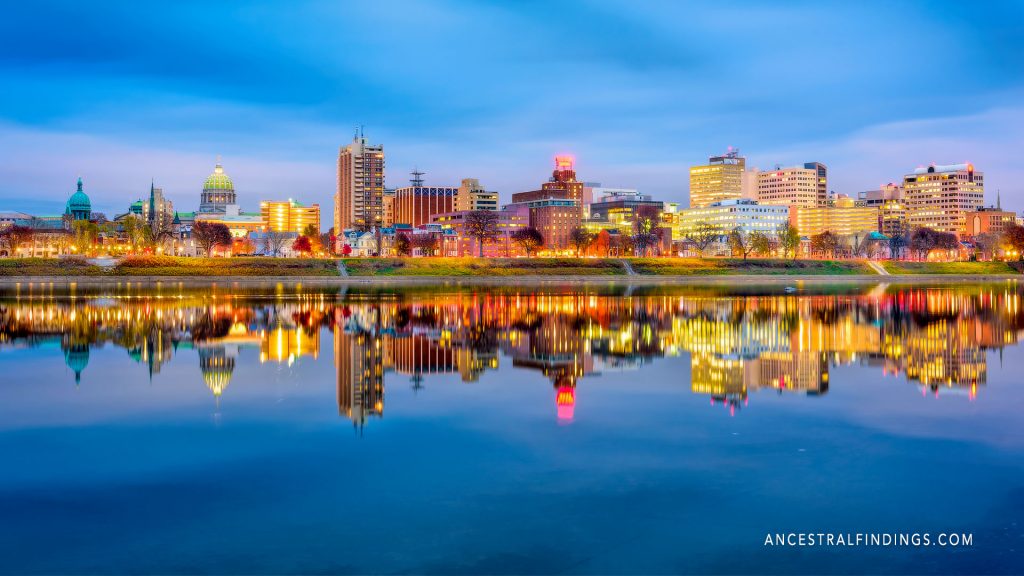
The Harrisburg area was known to the local Natives as Peixtin or Paxtang and was a key area for resting for traveling Natives, as well as a crossroads for Natives who were trading with other tribes. This is because trails that went from Delaware to the Ohio River and from the Potomac to the Upper Susquehanna River intersected there.
The first known European contact with the Native Americans in the Harrisburg area was in 1608 when an English exploration expedition led by Captain John Smith went there. On this expedition, Smith and his team went from Virginia and up the Susquehanna River and visited with the Susquehanna Native tribe there. This expedition, of course, is the same one where John Smith had his famous meeting with Pocahontas in Virginia.
Later, John Harris, a trader from England, settled in the Harrisburg area in 1719. After living there for fourteen years, he was able to obtain grants for eight hundred acres of land in the area from the English crown. In 1785, his son, John Harris, Jr., decided to lay out a town there on his father’s lands. He named the town Harrisburg, after the family’s surname. The town he proposed was given a formal survey that same year, by his father’s son-in-law, William Maclay. The city was incorporated as an official town in 1791. It was named the capital of the state of Pennsylvania in October of 1812 and has held that position since that time. The first national convention of the Whig political party, at which Harrison and Tyler were nominated for US President, was held in 1839 in Harrisburg.
The strategic location of Harrisburg has made it a popular town for a variety of things since the time of European settlement. It was used in 1719 as a trading post for those going westward to settle the frontier. Situated in a pass through a ridge of mountains, Harrisburg was and is a place many people used to go through on their way to other places. The Susquehanna River provided an advantageous opportunity for boat travel in the 18th and 19th centuries. The city became a place of prominence for the stocking up of supplies for those who were traveling through the area. It was also the place where travelers switched from river travel to land travel. It was this strategic location, at least in part, that gave Harrisburg the edge when the state legislatures went to choose a state capital.
Early Harrisburg was a sight to behold in the 18th and 19th centuries. The capitol building was a Colonial Revival style one that stood above all the other buildings in town, dominating them. While the streets were originally dirt and unpaved, they were laid out in an orderly grid pattern that made it easy to navigate the city. The Pennsylvania Canal was built along the side of the city in 1834, and residential houses occupied only a few blocks of the city, going south from the capitol building. Most of the residential houses were single-storied. There weren’t any factories there, but blacksmith shops existed in town, along with other traditional businesses.
The city gained a new importance during the Civil War. It was an important training location for the soldiers of the Union. Tens of thousands of them came through the local Camp Curtin. It also acted as an important railroad center for the Union, providing a crucial link between the coast of the Atlantic and the Midwest. In fact, several railroads went through Harrisburg at that time and spanned the length of the Susquehanna River.
Because the city was so important to the Union during the Civil War, Robert E. Lee’s Army of Northern Virginia made it a particular target of theirs and attempted to invade the city twice. An attempt was made during the Battle of Antietam, which resulted in Lee being forced to retreat to Virginia. The second attempt was made during the Gettysburg Campaign, and while Lee’s army made more of an inroad into Harrisburg during that attempt, they were still ultimately pushed back, leaving the city firmly in Union control.
The city also served as an important stop on the Underground Railroad.



